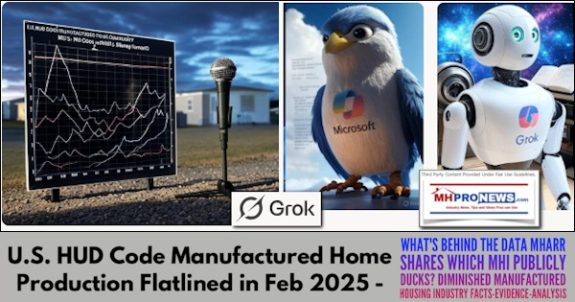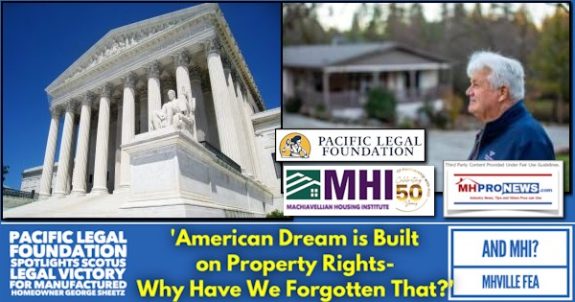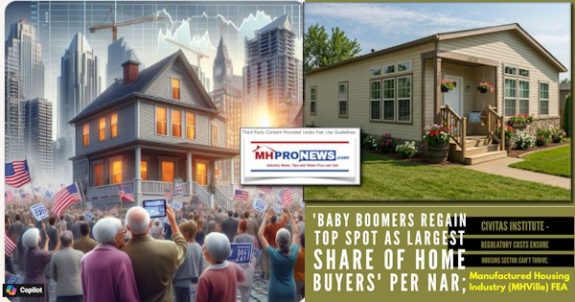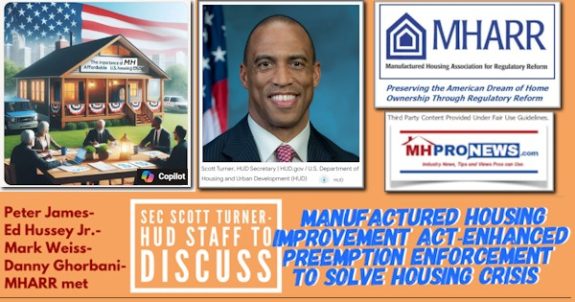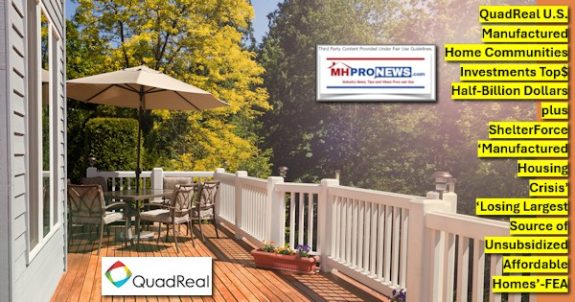MHI News
Congressional Recess Provides Opportunity to Showcase Role of Manufactured Housing and Build Support for H.R. 1779
With Congress on recess until September 9th, MHI urges industry members to continue their efforts to secure co-sponsors to the Preserving Access to Manufactured Housing Act (H.R. 1779). For more information on the legislation, including sample letters visit the MHI Web site by clicking here.
To date, nearly 50 U.S. Representatives have co-sponsored the legislation, which would preserve access to those seeking financing to purchase manufactured housing. Provisions from H.R. 1779 were included in legislation reforming the nation’s housing finance system (PATH Act; H.R. 2767) that was recently adopted by the House Financial Services Committee. However, MHI members and manufactured housing industry stakeholders are asked to continue working to build support for H.R. 1779. Increasing bipartisan support for the bill will serve to establish the provisions as non-controversial and show Congressional commitment to provide the industry with relief which will aid in convincing CFPB regulators to amend rules that limit access to credit in the manufactured housing market.
As a result of MHI’s and the industry’s efforts to move H.R. 1779 and companion Senate legislation being developed by Senator Sherrod Brown (D-OH) who serves as Chairman of the Senate Banking Subcommittee on Financial Institutions and Consumer Protection, the CFPB has recently released revised mortgage rules that provide relief to the manufactured housing market in key areas including:
• Appraisals: The CFPB released supplemental rules that exempt loans on existing manufactured homes (excluding real estate) from Dodd-Frank appraisal requirements, this is in addition to an existing rule exempting loans on all new manufactured homes (including real estate) from appraisal requirements. Click here to view the rules.
• Loan Originator Compensation: a CFPB modification of loan originator compensation rules now exempts from points and fees calculations the sales price of a manufactured home as well as any commission a manufactured home retailer pays to its sales persons. Click here to view the rules.
The critical relief granted by the CFPB to the industry in these key areas was a direct result of the industry-wide efforts to communicate the importance of preserving access to manufactured housing, as envisioned in H.R. 1779. The legislation has been able to serve as an effective means of focusing on the important role manufactured housing plays and that regulatory efforts should be tailored to ensure credit availability for the purchase of manufactured housing is not further deteriorated.
As a way to highlight the impact and important role the manufactured housing industry plays in creating jobs and providing affordable housing to Members of Congress, over the month-long August recess industry members can:
• Invite your U.S. Representative and their staff to tour a factory in their Congressional District or manufactured housing community
• Invite them to participate in your state association’s monthly board meeting
• Volunteer to host an informational roundtable meeting with local manufactured housing industry leaders to discuss issues of concern
Regulatory Update
HUD‘s Manufactured Housing Program in Limbo
On July 26, 2013, the current contract for HUD’s oversight of the Manufactured Housing Program ended. HUD’s contractor, the Institute for Building Technology and Safety (IBTS), is no longer providing services to HUD, including issuing certification labels necessary for homes to be shipped to consumers. With production levels increasing, state and private production inspection primary inspection agencies (IPIAs) are worried that they will run out of labels within days. MHI has notified HUD of the problem, and received assurances that it will be resolved to avoid any disruption of shipments. MHI understands that IBTS and at least one other bidder have submitted bids for the new contract, but as of this writing HUD has not awarded a new contract.
In the meantime, the work of the Manufactured Housing Consensus Committee (MHCC) is at a standstill because the contract for the MHCC Administering Organization (AO) ended months ago and new contract has yet to be awarded. Because federal law requires the AO to be certified by the American National Standards Institute, the available supply of candidates is very limited. The National Fire Protection Association (NFPA), who has held the MHCC contract since its inception, has expressed no interest in another long term contract with HUD.
HUD Proposes New Requirements for Ground Anchor Assemblies
On July 26th, HUD published a proposed rule in the Federal Register revising existing requirements for ground anchor installations and establishes standardized test methods to determine ground anchor performance and testing. In its summary of the proposal, HUD says that the ground anchor testing protocol is almost identical to the testing protocol developed by MHI and recommended by the Manufactured Housing Consensus Committee in 2011. MHI will be submitting comments and reaching out to its Technical Activities Committee for input. Comments are due September 24, 2013. Click here to view the proposed rule.
EPA’s Proposed Formaldehyde Standards Extend Beyond California’s Current Requirements
The Environmental Protection Agency (EPA) has extended until September 9ththe deadline for submitting comments on its proposed rules regulating formaldehyde emissions for wood products. Although the EPA says that its rule mirrors the Phase II California Air Resources Board (CARB) rule that has been in effect for over a year, there are differences that expand the scope of rule significantly.
Under the proposed EPA rule, fabricators (including manufactured home builders) will be subject to expanded labeling and recordkeeping requirements. Fabricators who build components such as kitchen cabinets may be subject to costly testing and certification requirements if they use formaldehyde resins to construct certain components such as book cases, kitchen cabinets and countertops. Importers of composite wood products will be subject to the requirements of the Toxic Substance Control Act which imposes stringent requirements to ensure against the importation of wood products that do not meet the required emissions standards.
The proposed rule contains an MHI supported provision which provides for a “manufactured-by” date rather than a “sell-by” date for the purpose of complying with the new rules. Therefore, products can be sold at any point before or after the program takes effect provided they were manufactured before the designated compliance date of manufacture. MHI has been working with a coalition including the National Association of Homebuilders and the SBA Office of Advocacy to ensure that the rule does not adversely impact fabricators of finished goods who use certified composite wood products.
Click here for a copy of the proposed rule. Click here for an EPA document that summarizes 15 areas in the proposed rule that deviates from the CARB regulations.
MHI Continues Dialogue with FEMA Regarding Disaster Housing
On August 8th, MHI met with a large contingent of officials from the Federal Emergency Management Agency (FEMA) to discuss industry efforts regarding disaster housing response and recovery. The purpose of the meeting was to continue efforts initiated in 2010 and which have continued annually to bring industry and FEMA officials together to discuss ways to improve and enhance the federal disaster housing program. MHI’s Disaster Housing Task Force Chairman, Jayar Daily, of American Homestar Corporation, Emanuel Levy, Executive Director of the Systems Building Research Alliance (SBRA) and MHI President and CEO, Richard Jennison, as well as MHI staff participated on behalf of the industry.
Responding to FEMA’s March Industry Day request for ideas to improve its disaster housing program, MHI and FEMA officials discussed an idea for a comprehensive lease program whereby the private sector would provide the range of services needed for disaster housing and would mitigate problems incurred by longer term storage and costly maintenance. Mr. Levy presented a proposal for a public-private initiative to develop a set of designs and specifications for HUD-Code homes that could be utilized by FEMA in its bid solicitation process for Temporary Housing Units (THUs). The proposal addresses a key recommendation of the MHI Disaster Housing Task Force for a solicitation process that provides specificity and transparency, and which allows a wide range of bidders to compete on a level playing field. The ideas presented at the meeting were also aimed at addressing concerns about the THU program cited in a June 2013 report by the Inspector General of the Department of Homeland Security regarding the increasing cost of the FEMA Temporary Housing Program.
The Administration Outlines Goals for A New Mortgage Finance System
In a speech on August 7th in Phoenix, AZ, President Barack Obama laid out the Administration’s comprehensive plan for a new housing financing system for American Families. Following the speech, in an interview with Zillow.com the president said he approved of a bipartisan approach from Sens. Bob Corker and Mark Warner which was unveiled earlier in the year and would replace taxpayer-owned mortgage companies Fannie Mae and Freddie Mac with a system where the government would still cover some losses on home loans in the event of an economic crisis.
The Administration’s plan for a new housing finance system is based on the following principles:
• Replace Fannie Mae and Freddie Mac’s current business model with a new system that puts private capital at the center of the mortgage finance system.
• Preserve the American dream of affordable homeownership for all qualifying borrowers in every community while at the same time ensuring sustainable rental options.
• Provide a government back-stop to ensure widespread access to safe and responsible mortgages in both good and bad economic times.
• Private capital must be wiped out before the government pays out on catastrophic guarantees provided through government reinsurance of private-market loans.
• The government role should be transparent and explicit, where its obligations and liabilities are clearly spelled out.
• The government should collect explicit and actuarially-fair premiums for the catastrophic guarantee it provides.
Click here to read more about the President’s Plan.






















